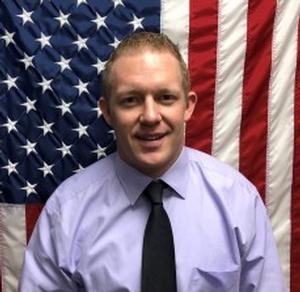Interview with Zach Dunlap
Recently I spoke with Zach Dunlap, Critical Care Manager and Paramedic III at Cypress Creek EMS in Houston.
Cypress Creek is the 9-1-1 emergency medical provider for a portion of Harris County just north of Houston, Texas that is larger in population and land mass than the city limits of Atlanta, Georgia. Fourteen full-time and four peak ambulances respond to about 45,000 emergency calls each year. Since its inception in 1975, CCEMS has established itself as an innovator in the field of prehospital medicine with many “firsts” to its credit.
Cypress Creek made the commitment to carry whole blood in 2017 and completed implementation in September of that year. In October of 2017, CCEMS made history with the first-ever use of whole blood on a trauma patient in the field.

Here are some questions I asked of Zach related to his experience:
- What where the factors that drove Cypress Creek to carry whole blood?
This all began when Dr. John Holcomb – at the time the Director of The Memorial Hermann Trauma Institute and Chief of Acute Care Surgery for UT Health – proposed to our CEO, Wren Nealy, that our agency should be carrying blood. When we discussed it as a team we all looked at each other all agreed it was the right thing to do. We address so many traumas that we could be resuscitating with blood, so why aren’t we? The vision and belief amongst the team was that this was 100% needed. Once we trialed it we saw fantastic results. We found that we saved many patients that otherwise would have died without it.
- What were your greatest challenges in implementing whole blood for your agency?
Cypress Creek has always been a disruptive innovator. In this case the main challenge was that we were the first – no one else was doing it so there was no road map. We aimed to do what the military does and move that treatment model into the civilian world. We had some logistical challenges on how to track the temperature of the blood but utilized a protocol adopted from military and trained the staff on how and when to use it. Another challenge was sourcing the blood, because again, we were the first EMS agency to carry. Lastly, we had to seek pre-hospital reimbursement from insurance companies but found success through negotiation via our billing company.
- How did LifeFlow fit into your objectives? What has been your experience in using it, both for blood and fluids?
We became aware of LifeFlow through Dr. Chris Hewitt, an associate of Dr. Mark Piehl. Dr. Hewitt was doing an EMS fellowship rotation and Dr. Piehl came out to do a lecture on pediatric trauma cases. He shared case studies of LifeFlow for these patients and we became intrigued. We trialed it and really saw a difference in the right patient application. At Cypress we wear body cams – one of the first EMS agencies to do so – and clearly saw the difference in using LifeFlow, particularly with blood. When you place a pressure bag of blood next to LifeFlow during infusion, you clearly see LifeFlow goes twice as fast. When we are treating a crashing patient, speed and efficiency in treatment is everything. LifeFlow helps us reach our goals in delivering blood to patients in need.
- Were there any unexpected benefits in using LifeFlow in the field?
Because of our body cam technology, we can review cases post-resuscitation. One thing that stood out was that LifeFlow allowed our supervisor to deliver blood while continuing to “run the show” and delegating to other team members. LifeFlow facilitates volume resuscitation as non-cognitive-overloading task; you just squeeze the handheld device and can continue to focus on other things. We have used LifeFlow for fluids on a couple of septic patients, but we primarily use it for blood volume resuscitation. Sometimes if there is a lot of blood or hemorrhaging we’ll administer 2 units, but usually by the time the first unit is complete the helicopter has arrived and the patient is transported.
- Can you speak to a particular case that stands out to you in how LifeFlow improved outcomes?
One patient I recall was one experiencing a severe GI bleed. He had low systolic pressure, peri-arrest. Rapid infusion through the LifeFlow quickly improved his blood pressure and allowed him to get to the OR. He walked out of the hospital a couple of days later. LifeFlow is an active vs. a passive approach where the blood gets in as you need it to. With pressure bag we can get distracted and won’t go back to it for 15 minutes to verify the infusion. If flow has been compromised, we may lose valuable time. LifeFlow allows assurance that the blood is being delivered – and quickly.
- Cypress is one of the first agencies to carry whole blood. How has that changed your ability to manage critically ill patients?
Now that we are past the early challenges of sourcing blood, we find carrying it makes our jobs easier. Countless patients have been saved. Among our many critically ill patients in 2020 we had 8 taken by helicopter to a Level 1 Trauma center who were able to bypass the ER and go straight to surgery because of the blood they received in the field. Seven out of those eight walked out neurologically intact. We are grateful to have the resources to treat these patients and feel LifeFlow plays an important role in managing critical care for volume resuscitation in the field.
NEW! Watch this video of a gunshot wound victim who was administered blood in the ambulance with LifeFlow and QinFlow Warrior. Thank you to Cypress Creek EMS, Reel Emergency, and Prodigy for making this video possible.
Learn more in our Case Series on LifeFlow PLUS for Management of Severe Hemorrhagic Shock.

